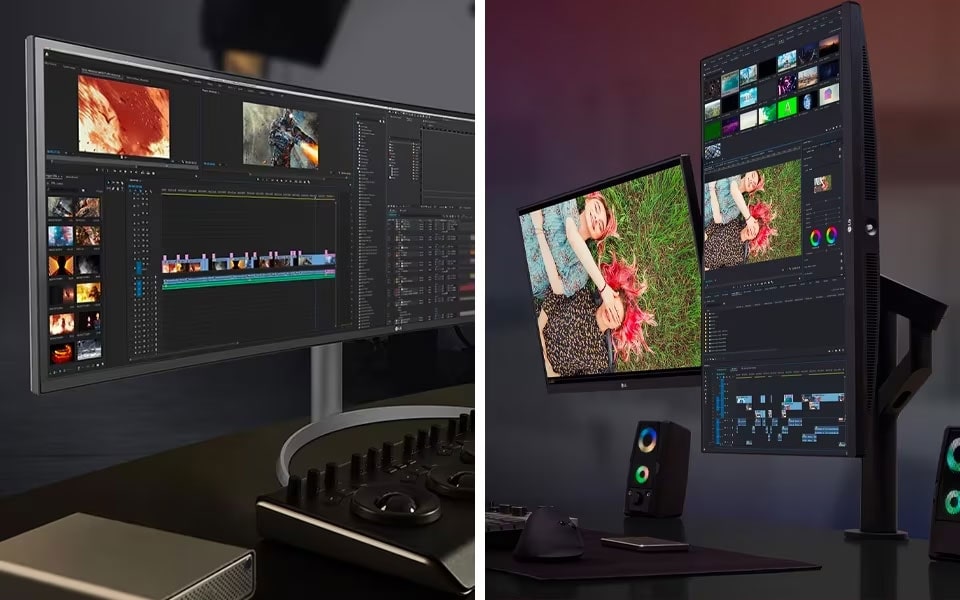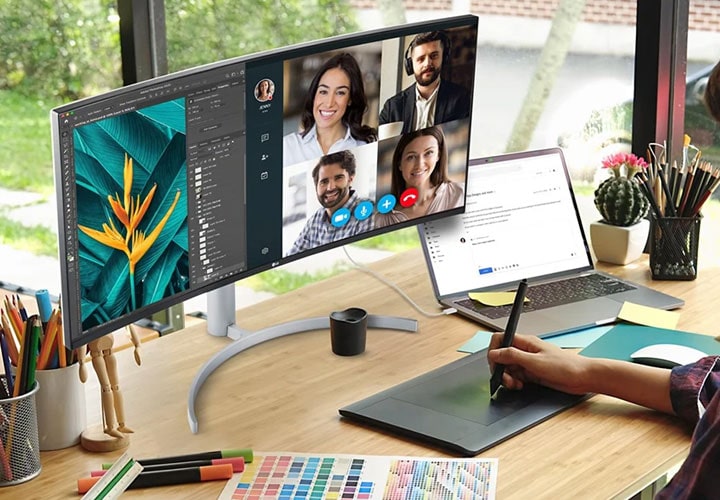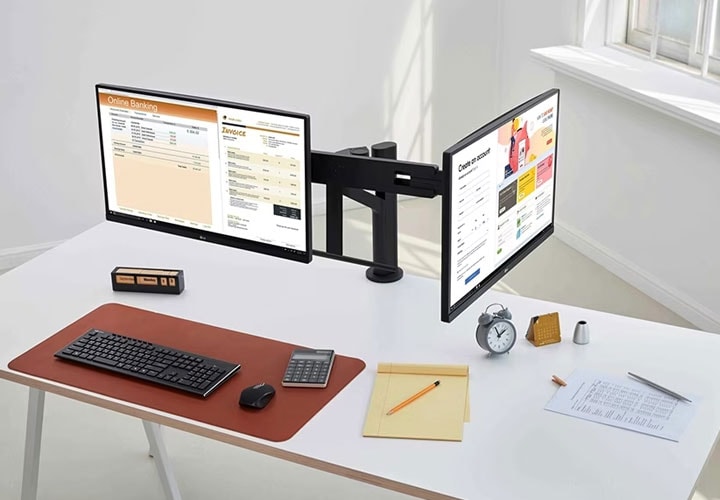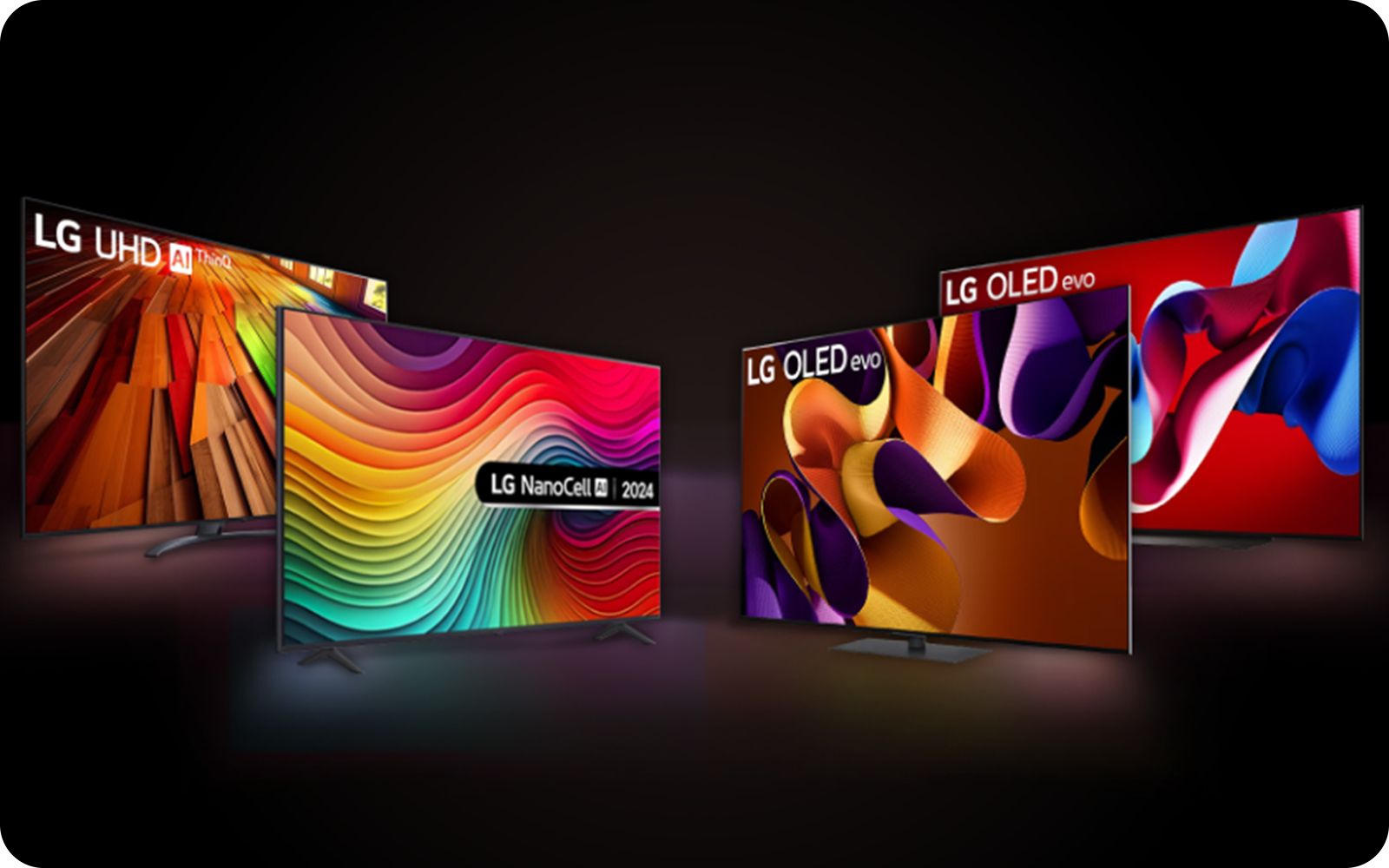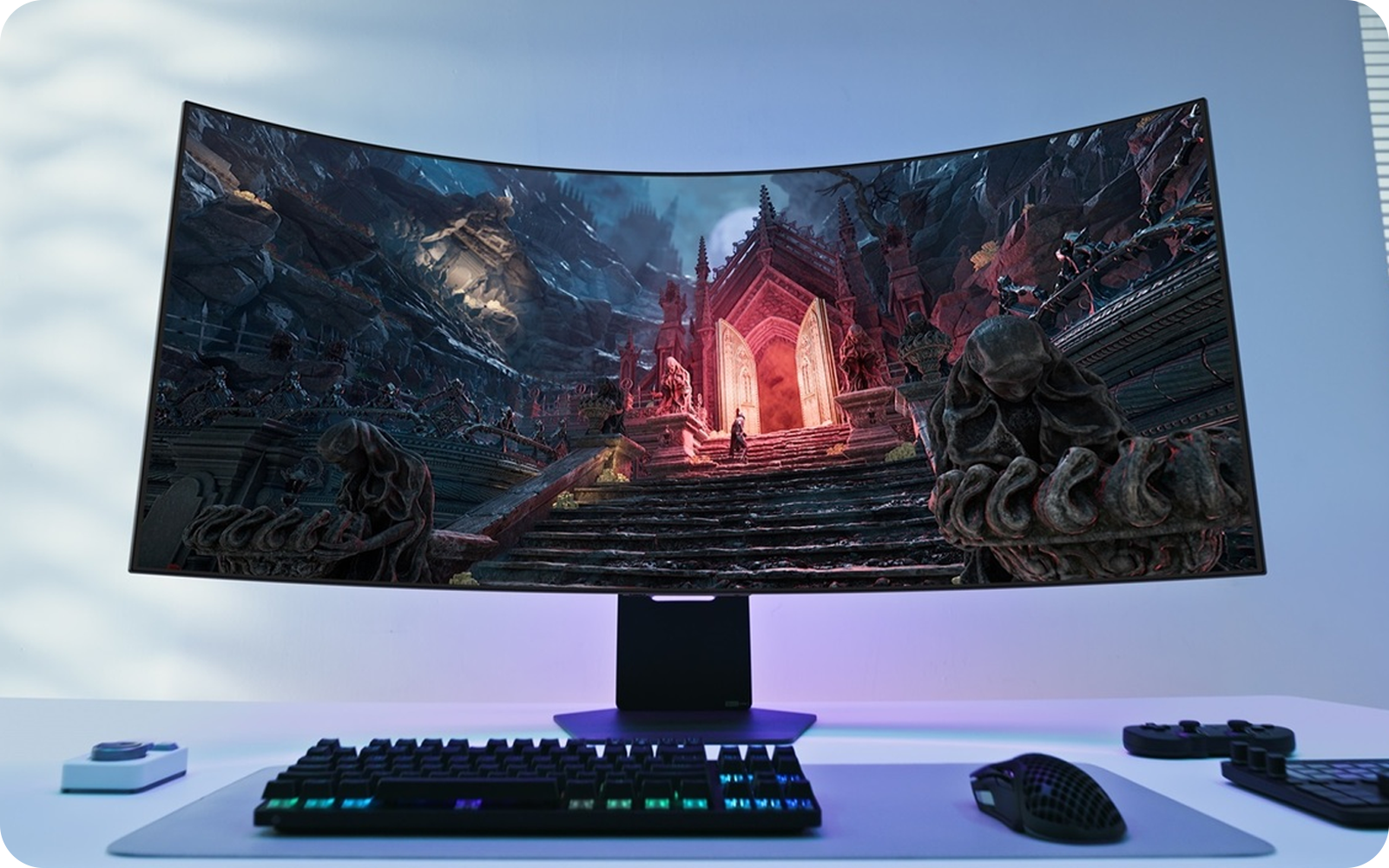We use cookies, including cookies from third parties, to enhance your user experience and the effectiveness of our marketing activities. These cookies are performance, analytics and advertising cookies, please see our Privacy and Cookie policy for further information. If you agree to all of our cookies select “Accept all” or select “Cookie Settings” to see which cookies we use and choose which ones you would like to accept.
LG LAB
Ultrawide vs. dual monitors
- Discover the main differences between ultrawide and dual monitors when it comes to size, aspect ratio and resolutions
- Learn about the many benefits of ultrawide monitors and how potential issues can be resolved
- Explore the advantages of a dual monitor and how a potential downside can be overcome
If you’re looking to upgrade and expand your workspace, then there are two options that immediately stand out: an ultrawide monitor and a dual-monitor setup. Both will significantly increase your screen space and allow you to easily multi-task, but how do you know which one is right for you? Read on to find out.
Ultrawide vs. dual monitors: what are the differences?
When it comes to comparing two screens against one, you have to take size, resolution and aspect ratio into consideration. That is because these can vary wildly and are all greatly important.
When it comes to size, widescreen monitors can range from 27-49 inches, with 34 inches being the most common and popular. With this standard size you will likely have a 21:9 aspect ratio and a resolution of 3440 x 1440.
Should you go for a dual monitor setup, then 27-inch screens are the most popular and widely available. These tend to have a 16:9 aspect ratio and a resolution of 2560 x 1440. However, by putting two monitors side by side you add 23.5 inches to the width of your setup, which is around 15.5 inches wider than a 34-inch ultrawide monitor.1
Ultimately, there are strengths and weaknesses to both options, which we’ll explore below.
Ultrawide monitors: pros and cons
Pros
Larger field-of-view
A wider aspect ratio means that scenery or objects that were outside your field of view on a 16:9 widescreen become visible on a 21:9 ultrawide screen.
A more minimal look
One screen means fewer connections, less adaptors and an altogether much cleaner design.
No middle bezel An important one when streaming videos or playing games, a single large screen means no annoying bezel and thus makes the entire experience more immersive.
Cons
This will very much depend on the computer you are using but an ultrawide screen does require more GPU power due to the higher resolution. Therefore when watching content, playing games or using programs that don’t support the 21:9 aspect ratio, there may be a slight drain which could cause the frame rate to drop and there be some distortion of the image.
Solution: Fortunately, with LG monitors such as the 34” UltraWide QHD, there is a way to take some stress off the graphics card as you can easily switch from the standard 21:9 to 16:9 by accessing the settings and toggling between the two aspect ratios.
Dual monitors: pros and cons
Pros
Increased screen space and greater flexibility
By using dual monitors you will not only have a far wider display, but you build your setup your way. This includes side-by-side, stacked or mixed-size monitor pairs.
Easy to multitask
Using a second monitor makes it far easier and faster to run multiple programs simultaneously. This makes for fewer clicks and a faster workflow.
A resolution that matches most content
The vast majority of online content is designed to fit the 16:9 aspect ratio so you won’t end up being frustrated that some content is cut off and now showing on the screen.
Cons
Less desk space and more cables
If you want a dual monitor setup then you are going to require plenty of desk space, especially if you decide on two 27-inch monitors. You will also need to run more cables to your computer which can prove frustrating, especially if you are using a laptop which only has a small number of ports.
Solution: If space is an issue, LG Ergo monitors come with a simple solution. They all feature an ergonomic C-clamp stand that takes up less space than a traditional dual monitor setup. Ergo monitors can also be arranged in a number of creative ways, such as stacked, side-by-side or double portrait so you can always find the optimal setup.
Now that you better understand the differences when it comes to ultrawide vs dual monitors, the only decision is which one suits you best. Fortunately, LG has a variety of monitors that will suit your every need.
Life's Good!
1 PC World
